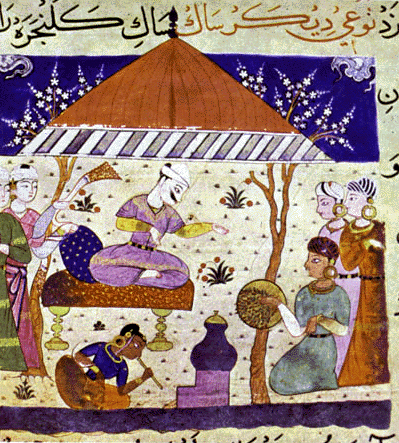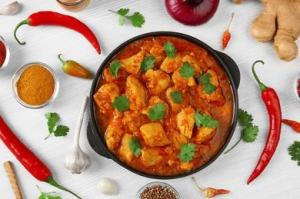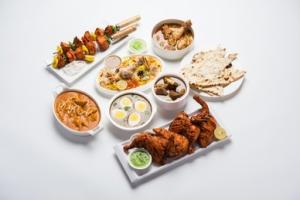The Delhi Sultanate had a wide impact on the cultural fabric of the Indian continent and its reach extended to all sectors of cultural life. Food was no exception to this dynastic influence. A rare gem in this regard was the fifteenth-century manuscript, the Nimatnama or The Book of Delights, a cookbook containing recipes of the Sultan of Mandu, Ghiyath Shahi.
The cookbook had been compiled by the sultan’s son Nasir Shah and it carried recipes of various delicacies which were part of the courtly cuisine. Besides recipes, this strange cookbook also contained remedies for ailments, hunting strategies, and advice on warfare logistics. Some of the dishes mentioned in the Nimatnama include the pilaf and saffron meat. This fifteenth-century dish is made with meat, saffron, and rice. The meat is first washed well and then fried in ghee or clarified butter in a cooking pot.

The ghee is then flavored with the addition of saffron, camphor, and rose water. The meat is then allowed to marinate in the saffron and after the saffron has infused the meat properly, water is added. A spice pouch is prepared with chopped cardamoms, cloves, coriander, cinnamon, fennel, cumin, fenugreek, and cassia wrapped in muslin which is placed with the meat. Separately, almonds, pine kernels, pistachios, and raisins are cooked in tamarind syrup. This sauce is added to the meat and the dish is topped off with camphor, rose water, musk, and ambergris before being served. This same method of cooking meat is applied to game birds like quail, partridge, and birds like pigeon and chicken. For the pilaf, the ingredients required are ghee, saffron, cardamom seeds, coconut water, long-grain brown rice, rose water, shredded coconut, and salt.
The culinary innovations of the sultans were followed by one of the most influential cuisines to grace the landscape of food culture in the subcontinent, the Mughal cuisine. The Nuskha-e-Shahjahani was a record of the dishes prepared in the royal kitchens in the seventeenth century during the reign of Emperor Shahjahan. This cookbook contains ten chapters that cover a variety of dishes that were served at the royal household, from bread or naans to qaliyas and dopiyazas or meat dishes. A favored spice mix that could be added to any Mughal dish was prepared out of four parts rose water, ten parts white hibiscus, twenty parts cardamom, four parts mace, and one part cloves.
The Nuskha-e- Shahjahani consists of many delectable recipes and one such recipe included in the cookbook is for the qaliya khasa dopiyaza. This meat dish is prepared with lamb which is cooked with onions, green gram, and vegetables like beetroot, turnip, and carrot. In pan ghee or clarified butter is heated into which onions are sautéed. The lamb is added to this along with water. Salt, ground coriander seeds, and grated ginger are added to the lamb and cooked on medium heat until the meat is softened. The vegetables are then added along with the green gram to the meat. Water is added to the cooking pot and the vegetables are allowed to cook on low heat.
The vegetables and lamb are fully cooked when only one cup of water is left in the pot. The meat and vegetables are separated from the stock after the dish is removed from the flame. The stock is then tempered with ghee and the meat and vegetables are added back to the pot and brought to a boil. To this rice, the paste is added and mixed well. A spice mix of freshly ground cinnamon, cloves, green cardamoms, and black peppercorns is added to the dish and mixed thoroughly. Finally, the dish is garnished with saffron and served with delight.





















